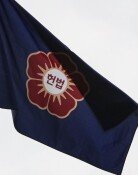Savings Banks, Credit Unions Charging Higher Interest
Savings Banks, Credit Unions Charging Higher Interest
Posted February. 22, 2010 08:55,
Retail lending has risen by secondary financial institutions such as savings banks and credit unions since the outbreak of the global economic crisis, but the results has been higher interest rates.
The Bank of Korea said yesterday that the outstanding balance of household loans extended by non-banking financial institutions was 137.66 trillion won (118.6 billion U.S. dollars) as of late November last year, up 2.11 trillion won (1.8 billion dollars) from the month before.
The balance has risen for eight consecutive months since April, and jumped 58.45 trillion won (50.3 billion dollars) since late 2004.
The portion of loans from non-banking financial institutions also rose from 21.7 percent of all household loans in January 2007 to 25.2 percent in November last year.
Interest rates charged by secondary financial institutions for the working class keeps rising vis-à-vis those charged by banks. As a result, ordinary people have benefited relatively less from low interest rates since the onset of the global financial crisis.
The average interest rate at savings banks was 12 percent last year, 6.35 percentage points higher than the average (5.65 percent) charged by regular banks. The gap between the rates at savings and regular banks increased two percentage points in two years from a difference of 4.37 percentage points in 2007.
In addition, the average interest rate on general loans charged by credit unions was 8.03 percent last year, as the interest rate gap between credit unions and banks reached 2.38 percentage points, the highest since 2000.
The average interest rate imposed by agricultural cooperative federations reached 7.09 percent for an interest gap of 1.44 percentage points versus that of banks.
jaeyuna@donga.com
Headline News
- Med professors announce intention to leave hospitals starting Thursday
- Bridge honoring Sgt. Moon Jae-sik unveiled in Pennsylvania
- Chief of Staff Chung tells presidential secretaries to stay away from politics
- US FTC bans noncompete agreements
- N. Korea launches cyberattacks on S. Korea's defense companies







